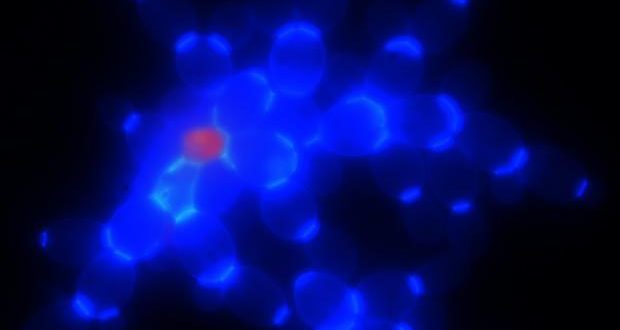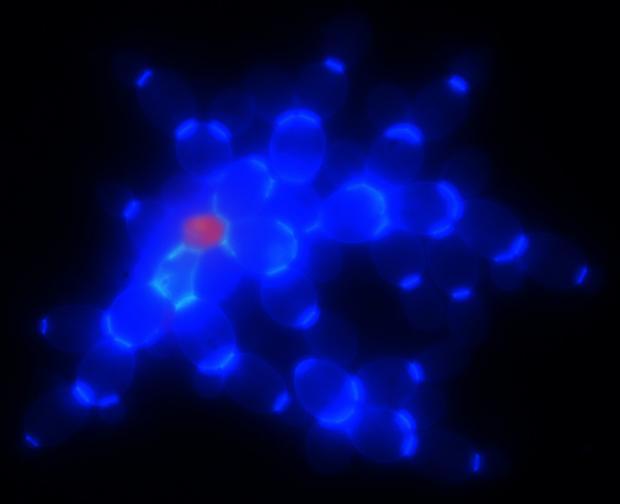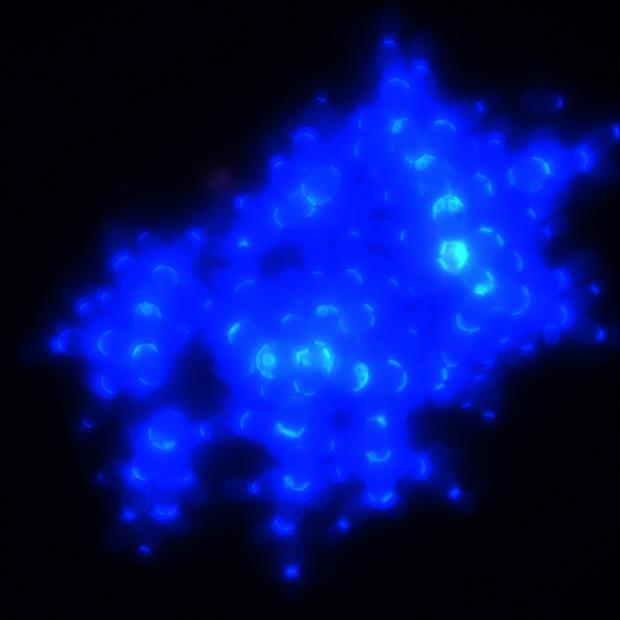A team of researchers from the United States have coaxed single-celled, brewer’s yeast – Saccharomyces cerevisiae – into evolving as multicellular, snowflake-like, groups of yeast.
They’re called snowflake yeast and have even evolved to use apoptosis – programmed, cell suicide – to create new, multicellular, life.
“We see some cells evolving to give up their life in a way that helps the cluster itself reproduce,” William Ratcliff, study co-author and postdoctoral researcher at the University of Minnesota told Science-Fare.com. “Some of the cells evolve to commit suicide, and those cells that die actually become the breakpoint, within the cluster, where a new propagule is formed.”
That propagule is a genetically identical, multicellular, daughter cell – but substantially smaller. The researchers say it grows like a child does and when it matures – at a size that’s fairly consistent within all snowflake yeast – it starts producing its own, genetically identical, daughter cells.
“Division of labour is a huge advantage that multicellular organisms possess,” Ratcliff said. “We have multiple cells that can perform different functions, allowing multicellular organisms to have sophisticated higher level functionality and complexity.”
“And, it has to involve more or less from scratch,” he added.
These cells aren’t just clumping either, the researchers say. They’ve shown the cells are forming by postdivision adhesion – they rejoin after dividing – leading to a cluster of cells that’s genetically identical. This minimizes the chances of a single cell ‘going rogue’ for its own benefit.
The researchers say it increases the overall productivity of the cells and creates an environment that actually encourages a cell to commit suicide for the benefit of the group instead of going rogue and reproducing itself – a hallmark of cancer.
“The unifying characteristic of all multicellular organisms is that we see natural selection acting in between whole groups of cells,” Ratcliff said. “A consequence of this selection – between whole groups – is the evolution of group level traits.”
After coaxing the yeast into acting as a multicellular group, the researchers wanted to see how they’d evolve next. Instead of increasing the amount of cells in the cluster, which was fairly constant and consistent, the cells grew in size, increasing the overall size of the snowflake yeast, without increasing the number of cells in each ‘snowflake’.
“We’re seeing the evolution of increased cell size as a way of getting larger clusters, without requiring the yeast to essentially wait for mutations that increase the number of cells within the cluster,” Ratcliff said.
The shape of the cells also started changing – they started getting less circular and more oblong. The researchers say this is what allows them to grow in size while they evolve to grow more cells per cluster.
“We’re looking at the mode and tempo of how these cluster level traits evolve through time,” Ratcliff said. “There’s several ways in which snowflake yeast could evolve to settle faster.”
How organisms made the transition from unicellular to multicellular life isn’t well understood – it didn’t even happen just once, researchers say. To make it more challenging, they evolved to be multicellular at very different points of history, giving each multicellular organism hundreds of millions of years to evolve and refine those group level traits.
“We’re most familiar with are the animals, plants and fungi,” Ratcliff said. “But, we know that multicellularity has evolved at least 25 times in different biological groups.”
These experiments challenge the belief that evolving to be multicellular is an intensive, complex process, but even the researchers say they had to fail before they could succeed.
“In nature we don’t know what the ecological conditions were under which multicellularity first evolved, Ratcliff said. But we’re confident it had something to do with an environment in which forming a cluster of cells was beneficial.”
After trying to select for cluster formation in yeast, using a detergent – and killing them all, instead of some – the researchers shifted to a method that was as forceful in favouring cluster formation, but not as destructive. They selected yeast by choosing those that settled the fastest.
The researchers essentially mixed a solution of yeast mixed and liquid that encourages growth – like shaking a snow globe – and removed those that settled first into new fresh liquid, allowing them to live.
“It’s a way in which we can select for clusters of cells – clusters of cells settle more quickly through liquid media than single cells,” Ratcliff said. “As a result we provide an advantage to forming clusters, but it’s not so sensitive that it’s easy to kill everything.”
“Even if there are no cluster forming yeast in our tubes we still transfer yeast every round of settling.” He added.
The researchers have also started exploring possible applications for studying cancer and have even looked at possible biotechnology applications – beer and winemakers are always looking to improve the quality of their yeast.
Check out some cool video and more pictures of snowflake yeast here
The research was published in the journal, Proceedings of the National Academy of Sciences
 Science Fare Media Science News – Upgraded
Science Fare Media Science News – Upgraded




